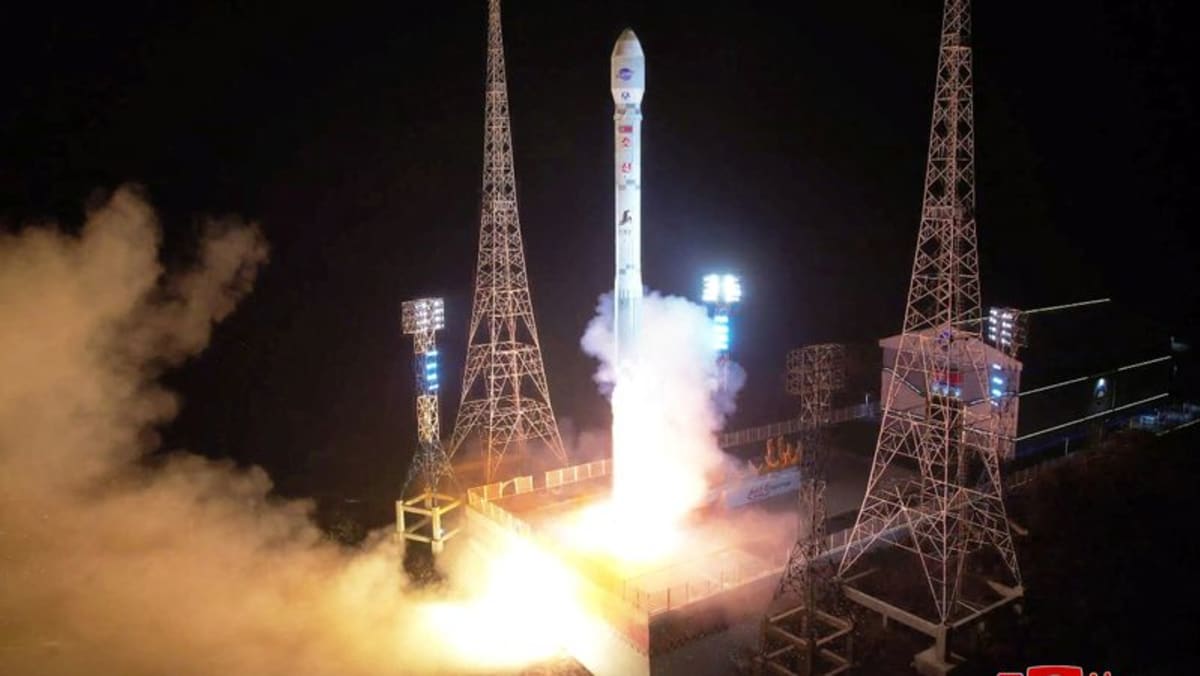
The pact, known as the Comprehensive Military Agreement and aimed at de-escalating tensions between the rivals, was signed at a 2018 summit between former South Korean President Moon Jae-in and North Korean leader Kim Jong Un.
But critics have called for it to be scrapped, saying it weakened Seoul’s ability to monitor North Korea’s actions around the border, while Pyongyang has flagrantly violated the agreement.
South Korea’s Defence Ministry said it was suspending a clause in the agreement as of 3pm (0600 GMT) and resuming aerial surveillance near the joint border.
North Korea’s KCNA state news agency said the Malligyong-1 satellite was launched on a Chollima-1 rocket from the Sohae satellite launch facility at 10.42pm (1342 GMT) on Tuesday and entered orbit at 10.54pm (1354 GMT). KCNA cited North Korea’s National Aerospace Technology Administration.
North Korea had notified Japan it planned to launch a satellite between Wednesday and Dec 1, after two failed attempts to launch what it called spy satellites this year.
South Korea’s military said it believed the latest rocket carried a reconnaissance satellite. Aegis-system equipped destroyers from South Korea, Japan and the United States were in position to track the launch vehicle and share information.
Japanese broadcaster FNN reported a test on sharing information on Tuesday’s launch failed because of technical problems. The three countries have boosted military cooperation to respond to North Korea’s missile threat.
RUSSIA CONNECTION
On Wednesday, the US nuclear-powered submarine USS Santa Fe docked at a South Korean port, a day after the Carl Vinson aircraft carrier arrived in a show of force against North Korea’s nuclear and missile programs.
US National Security Council spokesperson Adrienne Watson called the satellite launch “a brazen violation of multiple UN Security Council resolutions”, and said it “raises tensions, and risks destabilising the security situation in the region and beyond”.
United Nations Secretary-General Antonio Guterres called for North Korea to fully comply with UN resolutions and urged Pyongyang to return to dialogue, a spokesperson said.
Tuesday’s launch is the first since North Korean leader Kim Jong Un met Vladimir Putin at Russia’s modern space facility in September, where the Russian president promised to help Pyongyang build satellites.
South Korean officials have said the latest launch most likely involved technical assistance from Moscow under a growing partnership that has seen North Korea send millions of artillery shells to Russia.
Some missile experts, however, said that it was too soon for Russian technical assistance to have been fully incorporated into the satellite or the rocket and that Moscow would not have shared highly sensitive and proprietary technology.
“This consultation may not have been an in-depth involvement in the design, but likely targeted specific challenging aspects within North Korea’s planned design,” said Hong Min, an expert on the North’s weapons development at the Korea Institute for National Unification.
Jeffrey Lewis, a missile expert at the James Martin Center for Nonproliferation Studies, said it is much too early for the North to have integrated Russia’s assistance.
“Maybe the Russians gave them some advice, but it’s normal for countries to launch and learn,” Lewis said.
Russia and North Korea have denied conducting arms deals, but are publicly promising deeper cooperation.
KCNA said Kim Jong Un personally observed the launch, which came just over a week before South Korea plans to send its first spy satellite into space on a rocket operated by the US company Space X.
After the May launch attempt, South Korea retrieved the wreckage of the satellite from the sea and said an analysis showed it had limited use as a reconnaissance platform.
